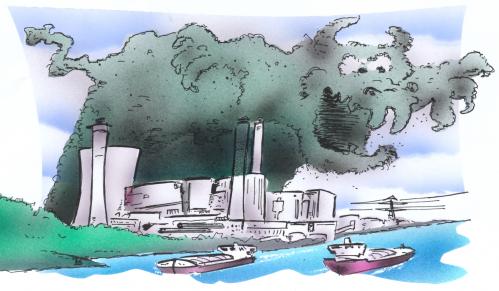New U.S. Anti-Smog Restrictions Raising Debate Over Effects on Atmospheric Chemistry
 January 26, 2010
January 26, 2010  Kyriaki (Sandy) Venetis
Kyriaki (Sandy) Venetis  Cartoon courtesy of toonpool.com
Cartoon courtesy of toonpool.com
There is always a lot of controversy anytime longstanding federal regulations are changed. This time, the uproar came because the U.S. Environmental Protection Agency announced plans to increase the stringency of national air quality standards regarding nitrogen dioxide (NO2) emissions.
NO2 forms quickly from the emissions of cars, trucks, buses, power plants, and off-road equipment. In addition, the compound also contributes to the formation of ground-level ozone (also known as smog), and fine particle pollution, which is linked with a number of adverse effects on the human respiratory system.
There is a clear benefit to taking action to reduce NO2, but there is also concern among some in the scientific community about potential side effects to taking this action.
 EPA,
EPA,  global warming,
global warming,  legislation,
legislation,  methane reduction,
methane reduction,  pollution | tagged
pollution | tagged  EPA,
EPA,  air quality,
air quality,  global warming,
global warming,  llegislation,
llegislation,  methane,
methane,  nitrogen dioxide,
nitrogen dioxide,  smog
smog 



